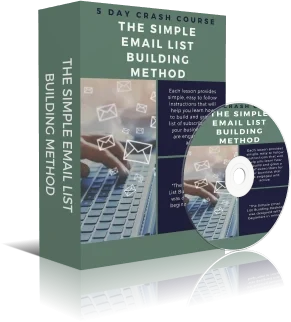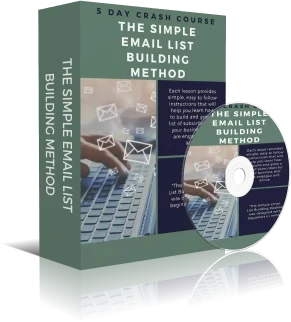
Newsletter Sign Up
With FREE List Building Course!
Our newsletter contains useful tips, notification of events and offers. You may cancel your subscription at anytime. Plus receive The Simple Email List Building Method 5 day crash course FREE when you subscribe!.
The Ultimate Beginners Guide to Email Marketing: Build Relationships, Grow Your Business, and Rank Higher
7 June 2023
Table of Content
- Beginners Guide to Email Marketing Introduction
- What is Email Marketing?
- Getting Started: Setting Up Your Email Marketing Strategy
- Building Your Email List
- Crafting Engaging Emails
- Email Automation: Saving Time and Boosting Results
- Measuring Success: Tracking and Analyzing Email Performance
- Avoiding Common Mistakes and Best Practices
- Wrapping Up: Next Steps and Further Reading
- Conclusion:
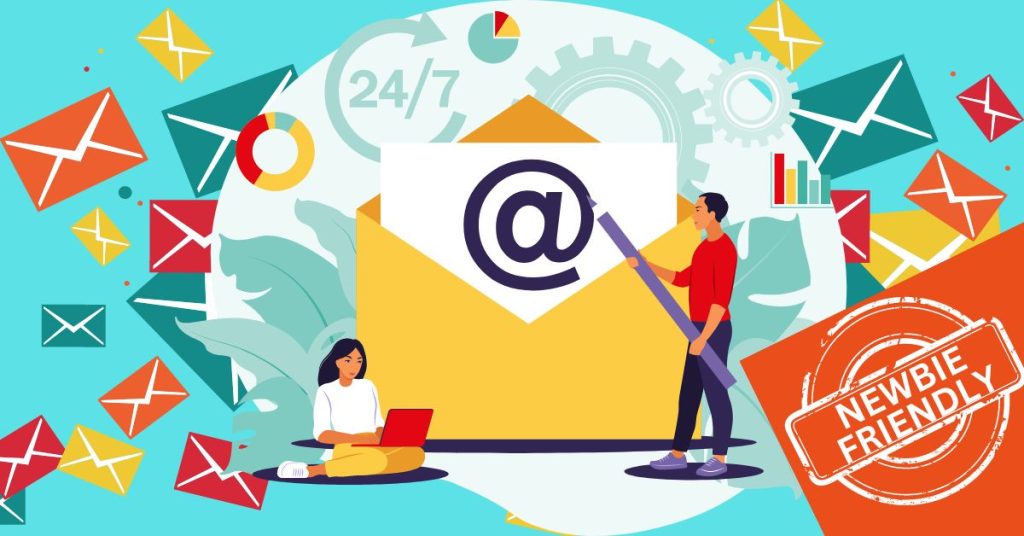
Beginners Guide to Email Marketing Introduction
Welcome to the world of email marketing and this beginners guide to email marketing!
Now you may be asking:
- Will this guide explain what are the basics of email marketing?
- Is this email marketing for entrepreneurs?
- Does this beginners guide cater for small business email marketing?
- Is this a side hustler’s guide to email marketing?
- Will this show me how to learn email marketing from scratch?
Yes, to all these! And along the way you will also discover:
- How does email marketing work?
- Building relationships with email marketing.
- Growing your business with email marketing.
- Email marketing strategies for beginners.
- The basics of email marketing.
In this beginners guide, we’ll break down the fundamentals of email marketing in a friendly and easy-to-understand manner. Whether you’re just starting out or looking to improve your existing email marketing efforts, we’ve got your back.
Like any subject, jargon is an everyday part of the learning process and unfortunately an email marketing beginners guide is no different. But fear not, no prior knowledge is assumed, meaning when jargon has to be used we will explain that jargon in laymen’s terms.
So without further ado, let’s get started.
What is Email Marketing?
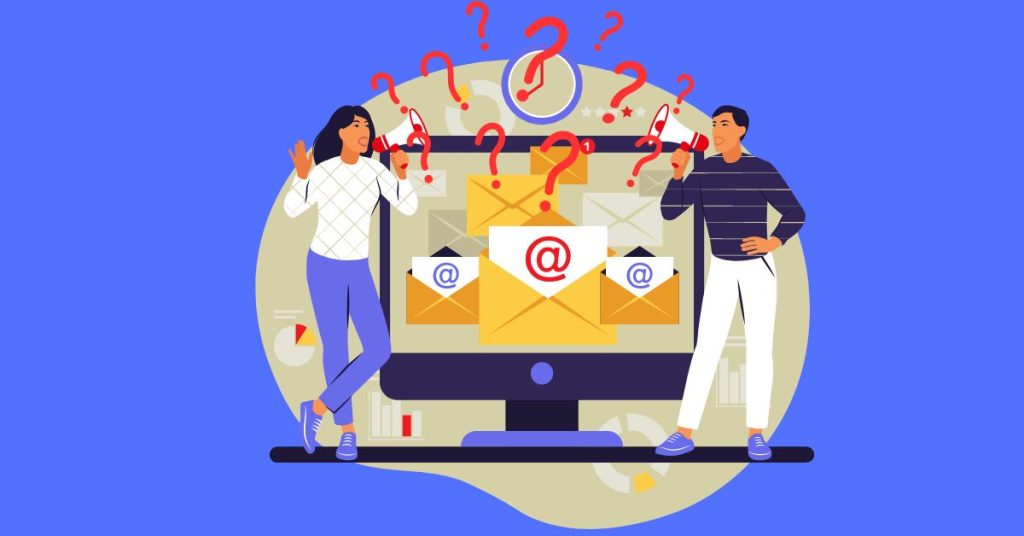
Email marketing is a digital marketing strategy that involves sending targeted emails to a group of subscribers with the goal of:
- building relationships,
- promoting products or services,
- and driving desired actions
It allows you to reach your audience directly in their inbox, delivering personalized and engaging content.
The benefits of email marketing are numerous:
- Firstly, it’s cost-effective, especially when compared to traditional marketing methods like print or television advertising.
- Additionally, email marketing enables you to personalize your messages, tailoring them to the specific interests and needs of your subscribers.
- Unlike your followers on social media you own the email list and dont run the risk of having your account suspended.
- Lastly, email marketing is highly measurable, providing valuable insights into the performance of your campaigns and allowing you to make data-driven decisions.
Getting Started: Setting Up Your Email Marketing Strategy

Before you jump into creating and sending emails, it’s crucial to define your email marketing strategy.
Start by determining your goals.
What do you want to achieve with your email campaigns?
- Is it to drive sales,
- increase website traffic,
- build brand loyalty,
- or all of the above?
Clearly defining your goals will help shape your overall strategy.
Next, identify your target audience:
- Who are your ideal customers?
- What are their demographics, interests, and pain points?
Understanding your audience will help you craft relevant and engaging content that resonates with them.
To start sending emails, you’ll need an email marketing service provider (ESP). There are several popular ESPs available, such as AWeber, GetResponse and Moosend.
These platforms offer user-friendly interfaces, email templates, list management tools, and analytics to help you streamline your email marketing efforts.
Lastly, familiarize yourself with email marketing regulations and best practices.
For instance, the General Data Protection Regulation (GDPR) in the European Union.
The CAN-SPAM Act in the United States set guidelines for email marketing, including obtaining consent from subscribers and providing clear unsubscribe options.
I don’t profess to be a legal expert and as such will not make any attempt to give any advice. As such, I suggest you follow the links towards the end of this article titled Further Reading.
Building Your Email List
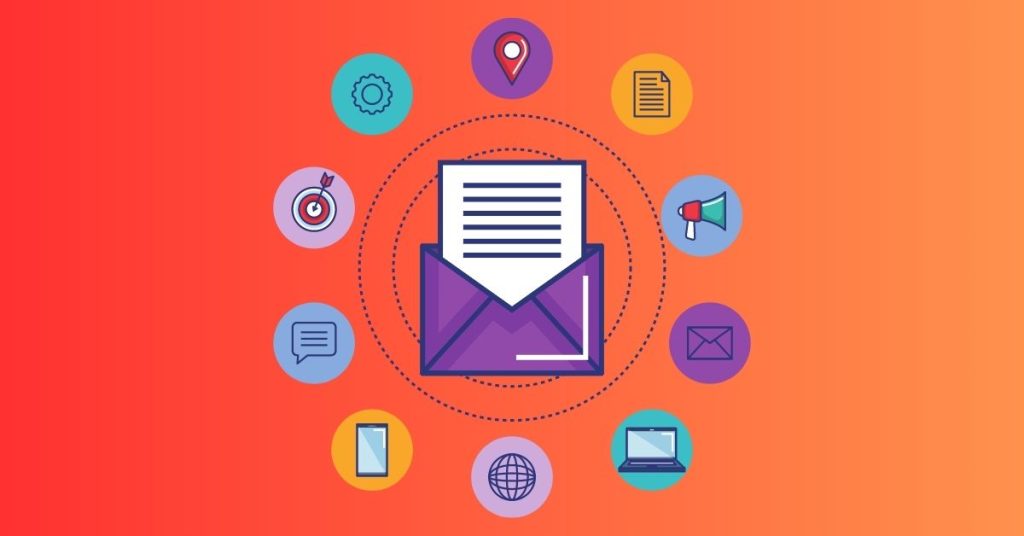
Building a quality email list is crucial for the success of your email marketing campaigns.
This list consists of individuals who have willingly subscribed to receive emails from you, indicating their interest in your business.
Here are ethical ways to build your email list:
a. Add sign-up forms on your website and blog:
Place eye-catching sign-up forms in prominent locations on your website, such as:
- the homepage,
- blog sidebar,
- or footer.
Clearly communicate the value subscribers will receive by joining your list, whether it’s exclusive discounts, informative content, or insider news.
b. Create lead magnets:
Lead magnets are valuable incentives you offer in exchange for someone’s email address. These can include:
- e-books,
- cheat sheets,
- templates,
- or exclusive content.
Develop lead magnets related to your niche and promote them on your website and social media platforms to attract subscribers.
c. Promote your email list on social media:
Leverage your social media presence by highlighting the benefits of subscribing to your email list.
Share snippets of your valuable content and encourage followers to join your community for more exclusive offers and insights.
Crafting Engaging Emails

Now that you have subscribers, it’s time to create engaging emails that capture their attention and drive action.
Here are some essential tips:
a. Write compelling subject lines:
Your subject line is the first thing subscribers see when they receive your email, so it’s crucial to make it compelling and enticing.
Aim to pique their curiosity, create a sense of urgency, or promise a benefit.
Keep it concise and avoid using all capital letters or excessive punctuation, as this can trigger spam filters.
b. Create valuable content:
Your emails should provide value to your subscribers. This could include:
- educational content,
- helpful tips,
- exclusive offers,
- or entertaining stories.
Tailor your content to address their pain points, answer their questions, or fulfill their needs.
Remember to keep your emails:
- concise,
- scannable,
- and easy to read.
c. Use personalization:
Personalization helps you establish a connection with your subscribers.
Address them by their first name in the email greeting to make it feel more personal.
d. Segmentation:
Segment your email list based on subscriber interests or purchase history, and send targeted emails that cater to their specific needs or preferences.
Segmentation works by enabling you to send targeted emails that address the specific needs and interests of different segments within your audience.
For example, if you own an online clothing store, you can segment your list based on gender, allowing you to send tailored emails showcasing the latest collections for both men and women.
You can further refine your segments based on factors like geographic location, purchase history, or engagement level.
Why is segmentation so powerful?
Firstly, it allows you to deliver more relevant content. By sending targeted emails, you can provide subscribers with information and offers that align with their specific interests and needs. This personalized approach fosters a sense of connection and increases the chances of engagement and conversion.
Secondly, segmentation helps improve email deliverability and engagement rates. When you send content that resonates with subscribers, they are more likely to open your emails, click through, and take action. This positive engagement sends strong signals to email service providers that your emails are valuable and should be delivered to the inbox rather than the spam folder.
Lastly, segmentation enables you to build stronger customer relationships. By understanding your audience’s preferences and delivering content that speaks directly to them, you demonstrate that you value their individuality.
This builds trust and loyalty over time, leading to increased customer retention and advocacy.
Incorporating segmentation into your email marketing strategy is essential for achieving optimal results. By taking the time to understand your audience and divide them into relevant segments, you can unlock the full potential of email marketing.
Remember to regularly analyze and refine your segments as your business and audience evolve.
With segmentation, you’ll be able to create personalized experiences that truly resonate with your subscribers and drive business growth.
e. Optimize email design for readability and mobile devices:
Keep your email design clean, simple, and visually appealing.
Use a mobile-responsive email template that adjusts to different screen sizes, ensuring a seamless reading experience for subscribers on smartphones and tablets.
Incorporate images strategically to enhance the visual appeal, but ensure they don’t overshadow the main content of the email.
Remember to include a clear and prominent call to action (CTA) that directs subscribers to take the desired action, such as making a purchase or visiting your website.
Email Automation: Saving Time and Boosting Results
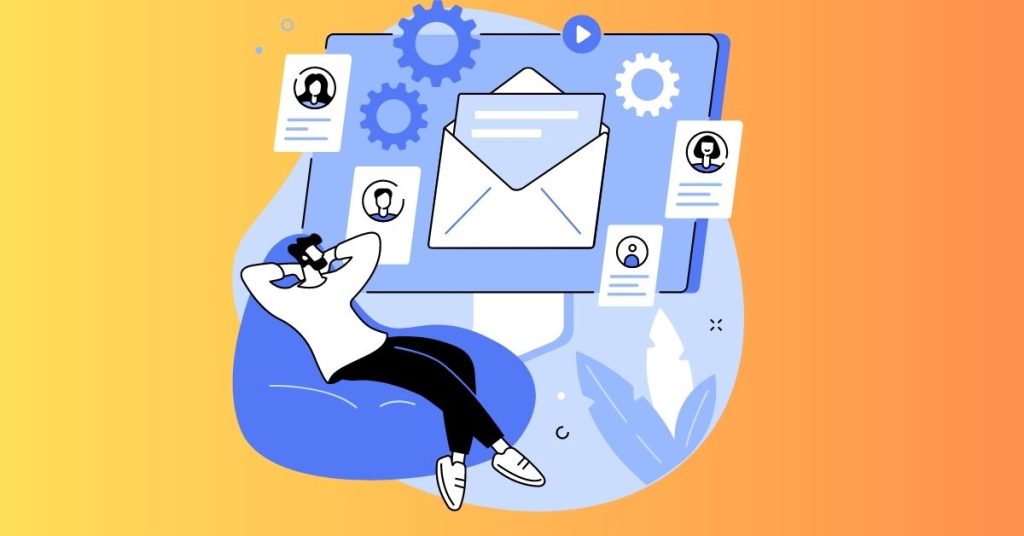
Email automation is a game-changer for email marketers.
It allows you to set up pre-scheduled emails that are triggered by specific actions or time intervals, saving you time and effort while nurturing your leads.
Here’s how you can leverage email automation:
a. Welcome series:
When someone joins your email list, set up a welcome series that automatically sends a sequence of emails:
- introducing your brand,
- providing valuable content,
- and highlighting key offerings.
This helps new subscribers feel engaged and connected from the start.
b. Abandoned cart reminders:
If you run an e-commerce business, automated abandoned cart emails can help recover lost sales.
This is when a subscriber adds items to their cart but doesn’t complete the purchase, a series of reminder emails with incentives, such as discounts or free shipping, to encourage them to come back and complete the purchase are automatically sent.
c. Drip campaigns:
Drip campaigns are a series of automated emails sent at predefined intervals to nurture leads and guide them through the customer journey.
For example, you can create a drip campaign that educates subscribers:
- about your product or service,
- showcases customer testimonials,
- and offers special promotions to convert them into paying customers.
Measuring Success: Tracking and Analyzing Email Performance
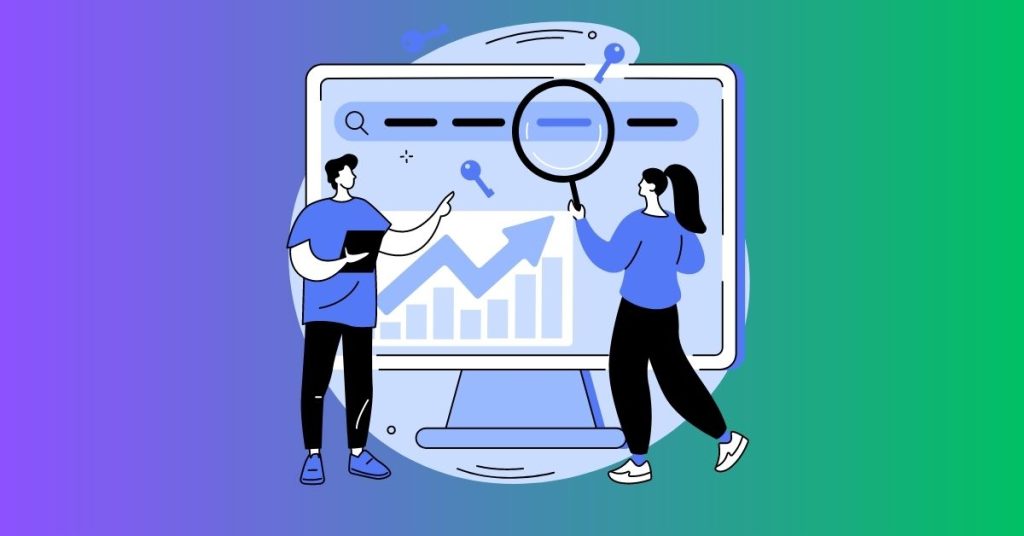
To gauge the effectiveness of your email marketing efforts, it’s important to track and analyze key email metrics.
Here are some metrics to focus on:
a. Open rates:
This metric indicates the percentage of subscribers who opened your email.
It reflects the effectiveness of your subject lines and the level of interest generated.
b. Click-through rates (CTRs):
CTR measures the percentage of subscribers who clicked on a link within your email.
It shows the engagement and relevance of your content and CTAs.
c. Conversion rates:
Conversion rates track the percentage of subscribers who took the desired action after clicking on a link in your email, such as making a purchase or filling out a form.
It directly ties your email marketing efforts to tangible results.
d. Unsubscribe rates:
This metric indicates the number of subscribers who opted out of receiving emails from you.
Keeping an eye on unsubscribe rates helps you evaluate the effectiveness of your content and ensure you’re providing value to your audience.
To track these metrics, most email marketing service providers offer built-in analytics tools that provide comprehensive insights into your campaign performance.
Use these insights to identify areas of improvement, experiment with different strategies, and make data-driven decisions to optimize your email marketing campaigns.
Avoiding Common Mistakes and Best Practices

While diving into email marketing, it’s important to be aware of common mistakes and follow best practices to maximize your success.
Here are some key tips:
a. Don’t over-send:
Bombarding your subscribers with too many emails can lead to fatigue and increased unsubscribe rates.
Find the right balance by considering the frequency that works best for your audience and the type of content you’re delivering.
b. Mobile optimization:
With a significant portion of email opens happening on mobile devices, it’s crucial to ensure that your emails are mobile-friendly.
Optimize your email design, use responsive templates, and test your emails across different devices and email clients to ensure a seamless experience.
c. Keep your list clean:
Regularly review your email list and remove inactive subscribers.
Inactive subscribers may affect your email deliverability and engagement metrics.
Consider re-engagement campaigns or segmenting your list to deliver targeted content to active subscribers.
d. Test and experiment:
Continuously test different elements of your email campaigns, such as:
- subject lines,
- CTAs,
- email design,
- and content,
to see what resonates best with your audience.
A/B testing can provide valuable insights and help optimize your email marketing efforts.
e. Provide value and build trust:
Email marketing is all about building relationships.
Focus on providing valuable content, exclusive offers, and personalized experiences that resonate with your subscribers.
Building trust and establishing a connection with your audience is key to long-term success.
Wrapping Up: Next Steps and Further Reading

Congratulations!
You’ve now gained a solid foundation in email marketing. It’s time to put your knowledge into action.
Start implementing the strategies discussed in this guide and monitor the results.
Remember that email marketing is an ongoing process of learning, optimizing, and adapting.
To further expand your knowledge and skills, there are various resources available.
Consider reading recommended books on email marketing, enrolling in online courses or workshops, and exploring industry-leading blogs and websites.
Stay curious, keep exploring new trends and strategies, and don’t hesitate to reach out for help or guidance when needed.
General Data Protection Regulation (GDPR) in the European Union
CAN-SPAM Act
Stop guessing and start testing: Improve your emails with A/B split testing
14 Email subject line best practices to get more opens
Conclusion:
Email marketing has the power to transform your business by nurturing relationships with your audience and driving valuable actions.
By following the principles outlined in this beginner’s guide, you’re well on your way to mastering the art of email marketing.
Remember to define your goals, build a quality email list, craft engaging content, leverage automation, track your performance, and always prioritize providing value to your subscribers.
Embrace the journey, experiment, and watch your business thrive through the power of email marketing.
Best of luck!
Continue Learning
- 1
- 2
© copyright 2022 by DigitallyPromote.me
© copyright 2024 by DigitallyPromote.me

